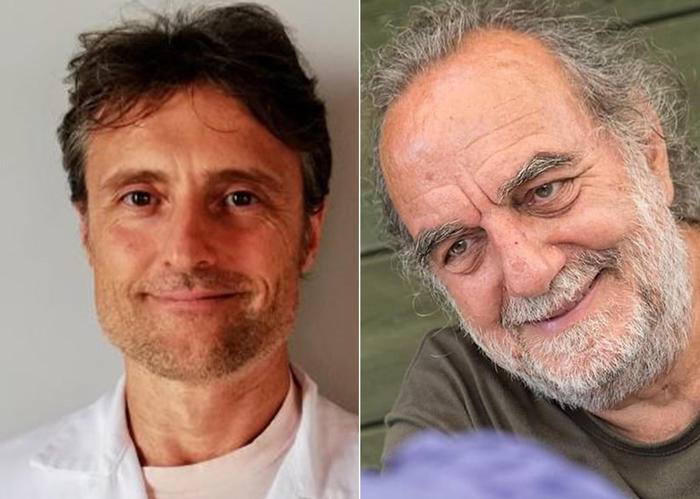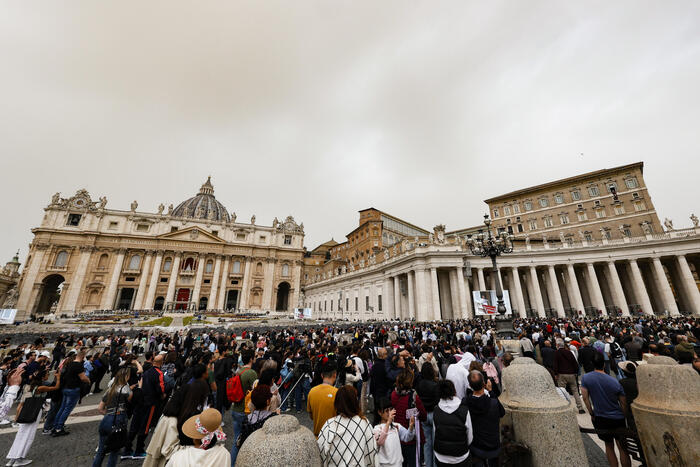On the page of the small address and telephone book headed by the letter
b
are André Breton, Brassaï, George Braque and Balthus.
Under the
c
stand out Jean Cocteau and Douglas Cooper.
The contacts of Nicolas de Staël, Tristan Tzara, Alberto Giacometti, Óscar Domínguez, Paul Éluard, Chagall and Lacan are also noted in round calligraphy, and more than one misspelling, on the small pages that the journalist and writer Brigitte Benkemoun took from a fabric cover kept in her bag last week in Madrid.
That agenda with a dazzling presence of the artistic and intellectual world of the 20th century is the backbone of her book
De Ella In Search of Dora Maar
(Taurus), a kind of individual and collective portrait that he arrived at by chance, as the rules of any self-respecting surrealist game dictate.
“I have brought it with me because there are people who think I have made it up”, he explains with a smile.
More information
Dora Maar projects herself beyond the shadow of Picasso
Benkemoun's husband had lost his beloved diary, she tried to buy him one just like it, but it was no longer made from the same leather and she ended up finding one on the eBay trading platform.
The one she received had a 1951 phone book inserted in a pocket and she, surprised by the names she found there, inquired herself.
The noted contacts of a plumber, a marble worker, a hairdresser or a veterinarian convinced her that she was not a bohemian or cursed artist, but a woman.
And the signs of an architect from Ménerbes were the definitive clue that led him to conclude that that agenda had belonged to Theodora Markovitch (1907-1997), the artist known as Dora Maar, who lived in that French town at that time.
Raised in Buenos Aires, the daughter of a Croat and a French woman, Maar is an indispensable figure in the surrealist and avant-garde circles of early 20th-century Paris.
Her career as a photographer was firmly established when she crossed paths with Pablo Picasso at Les Deux Magots cafe.
Maar Ella planted her open, gloved hand on the table and began sticking a knife between each of her fingers not caring about cutting herself.
Picasso took the bloody glove that night.
"That was a wicked game," says Benkemoun.
Picasso's partner from 1936 to 1945, that relationship marked a radical turning point that led Maar to abandon photography in favor of painting, a field in which she gained little recognition.
Her break with the painter dragged her into madness, mysticism and seclusion.
"Picasso felt that photography was not art but technique and, as he also did with Brassaï, he encouraged her to paint," argues Benkemoun, citing the biography of the artist written by Victoria Combalía.
“Maar brought the political will and awareness that Picasso didn't necessarily have.
Without Dora and without Paul Éluard there would be no
Guernica
.
And I'm sure she was very happy when they were working on that work, she felt that she was painting with him, that they were doing it together.
When Picasso finished
Guernica
, he took it out of the studio.
In her book, Benkemoun defends that Maar was not only a victim of the great Spanish painter, since she gave herself up voluntarily.
“Picasso for her was a blessing and a curse.
Maar was not that independent and she was also manipulative.
Some women and some men enjoy suffering," she says before recalling the interview she had in New York with Picasso's biographer and friend, John Richardson, in which he told her when he said goodbye: "Never forget that Dora was a masochist or you wouldn't you will understand”.
The relationship that the artist had with Georges Bataille, prior to Picasso, increased her erotic capital and she sowed doubt about her taste for sadomasochism.
Dora Maar portrayed by Man Ray.
Be that as it may, Benkemoun has no doubt that the painter from Malaga “used women and not only them, because he absorbed and fascinated those around him”.
Until now, emphasizes the writer, who is currently working on a book about another of Picasso's women, Marie-Thérèse Walter, the question was how the artist behaved with women, but in recent years the question is rather why. it was like that with them.
"The most important thing for him was painting and everything was at the service of this, he sucked the vital force of his women, he fed on them and when he felt that there was nothing left, he left them," she says.
“On the one hand, there are art historians who consider that if you question this aspect of Picasso you don't understand anything.
On the other hand, there are feminists who believe that if you do not classify him as a monster, you are complacent.
And her?
“We must not forget that Picasso was born in the 19th century, that determines many things.
Historians who reject the argument are wrong, but simply saying that he was monstrous explains nothing,” she replies.
"Picasso's anniversary next year is going to be tough, the statue of the genius is going to take a few hits."
"Beautiful, intelligent, surly, stubborn, passionate, hot-tempered, haughty, inflexible, exalted, proud, dignified, cultured, authoritarian, snobbish, vain, mystical, crazy."
Benkemoun lists in his book the most frequent adjectives applied to Maar.
Which one is missing?
“Ambitious”, replies the author.
“She was beautiful and talented, and her ambition was not a bad thing, she wanted to go as high as possible, and find a love that would make her grow in all her power, just like her friend Jacqueline Lamba ”.
That of Lamba, a fellow student at the School of Decorative Arts and partner of André Breton, is one of the more than 40 brief profiles with which Benkemoun has built this "relational biography", a kind of group portrait that takes form of
collage
or “a cubist painting”.
Going from one name to another, she set out to "draw the exquisite corpse of Dora's universe."
And among the select and varied group, one name in particular stands out, that of André-Louis Dubois, a high-ranking official who prevented Jean Genet's deportation, and who was a friend of Cocteau, Gide, Chanel or Camus, and a visitor to the studio of Picasso during the German occupation of Paris whenever there was a problem.
“It was very serious and very interesting,” he explains.
The role of Picasso's lover and muse eclipsed the figure of Maar for years, and Benkemoun, trying to rebel against this, sought out the gallery owner Marcel Fleiss, who exhibited her paintings in 1990, when she was 83 years old and 17 years after his death. Picasso.
He told her that during her visit to Maar's house , Hitler's
Mein Kampf
was on display in a bookstore .
“When she told me about it, I wondered if I wanted to spend two years focused on her, being a Jew.
How can you be an anti-fascist and end up an anti-Semite?
My conclusion is that she should not be reduced to that, she was an older woman who perhaps came to that because of her sadness and bitterness, who saw that all the dealers and the main collectors were Jewish and she was resentful, who wanted to provoke and humiliate Fleiss " .
Exclusive content for subscribers
read without limits
subscribe
I'm already a subscriber








/cloudfront-eu-central-1.images.arcpublishing.com/prisa/ZH3EF5RDTZBMMCYSAYHHFHYUHU.jpg)






